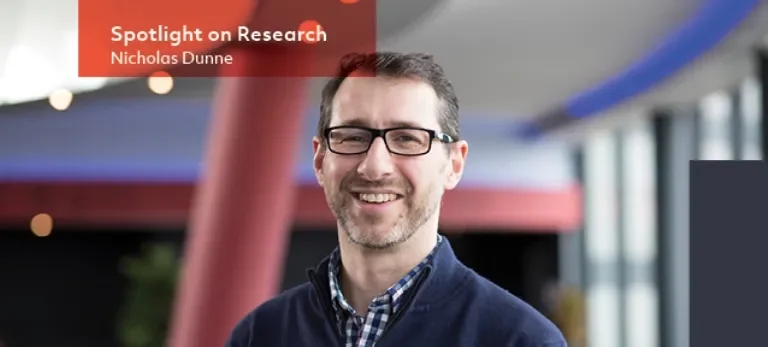

Material benefits for bones and wounds
Spotlight on Research speaks to Professor Nicholas Dunne, Chair of Mechanical and Manufacturing Engineering in the School of Mechanical and Manufacturing and the Director of the Medical Engineering Research Centre Engineering at DCU.
What do you work on?
“My research develops materials that can be implanted in the body to have a particular effect, such as promoting healing or delivering a particular drug/therapy for treatment of a particular disease/condition, or both.”
What kinds of conditions could be helped by that?
“One of the areas we are working on is cancer. Particularly in the prostate and breast - if the cancer spreads then bone metastases will result, which are associated with the development of skeletal-related events such as pathologic fractures and spinal cord compression.
So we are working with experimental pharmacists and cancer doctors to develop materials that can be injected into the body and not only deliver drugs to fight the cancer but also repair and replace damaged or porous bone.
We are also developing materials for helping wound repair, which is important for people with diabetes who might have pressure sores or ulcers that need help to heal.”
How did you become interested in biomaterials?
I am originally from Offaly and I studied Polymer Science in Athlone.
When I was there I saw an advert promoting a PhD at Queen’s University Belfast on injectable bone cement for hip replacements.
I went and did that PhD in collaboration with DePuy International and Musgrave Park Hospital in Belfast.
That opened my eyes to area of medical devices and biomaterials and I secured a job in DePuy as a Biomaterials Engineer. In 2000,I went back into academic research, first in DCU and then in QUB. I returned to DCU as a Full Professor of Biomaterials Engineering in 2016.
How has your work changed over the years?
“At first, I worked on materials for hip and knee replacements. These were materials to help make the replacements physically stronger and more robust.
Then, in 2007, my research moved into ‘bioactive’ materials that prompt a response in the body. We started to develop materials for when the bone in the spine had been damaged by trauma following a high impact collision.
These materials were designed to provide mechanical support and degrade over time so new bone could take its place.
From there, my research group went on to develop materials that can not only help with repair of bones and soft tissues but that can also deliver bioactive cargoes/medicines to help treat a particular disease or achieve a more efficient biological response in terms of tissue repair/regeneration.”
What is the most challenging aspect of research?
“I think for any researcher – one of the biggest challenges is money, securing the necessary funding for research is not only critical, but necessary.
I suspect that is even more of an issue for early career researchers, as the field is so competitive. DCU held a national biomedical engineering conference (www.binirl.com) in January and there were over 160 presentations from early-stage researchers and academics.
The quality and science was phenomenal and the majority of these researchers will want to keep working in research.
Therefore more investment and funding is needed to ensure this excellent expertise and knowledge is not lost, but developed to the maximum to guarantee that Ireland remains at the forefront of biomaterials and medical device innovation“.
And how about the rewards?
“I enjoy contributing to the development of new technology and knowledge that could be used in the clinic.
Every researcher has aspirations to develop patented technology that has the potential for commercial exploitation, but that is not always possible.
However it is possible to develop know-how and expertise that can translate into better care and outcomes for patients.
I also like teaching, sharing my knowledge, understanding and experiences so that students can learn and develop their own strengths.”
What do you do to get a break from the research and teaching?
“I have a busy family life with three boys, but when I can get out I like to run.
I have completed five marathons but these days I get out when I can, and our dog often comes running with me too.
It’s a great way to de-valve, there is no better way to do that than to get out running in the fresh air and may be thinking about the next grant application or big project at the same time.”
